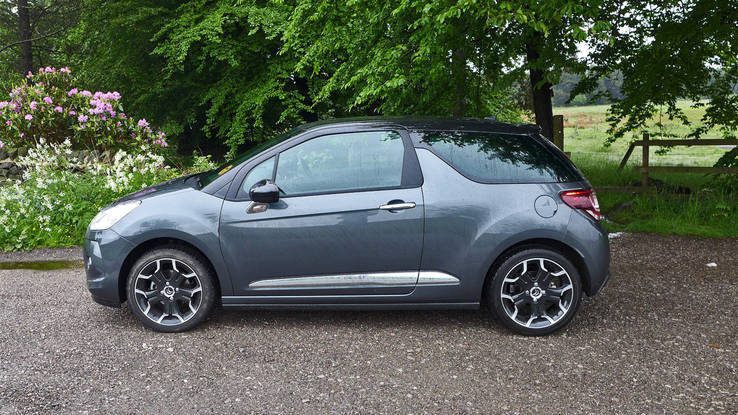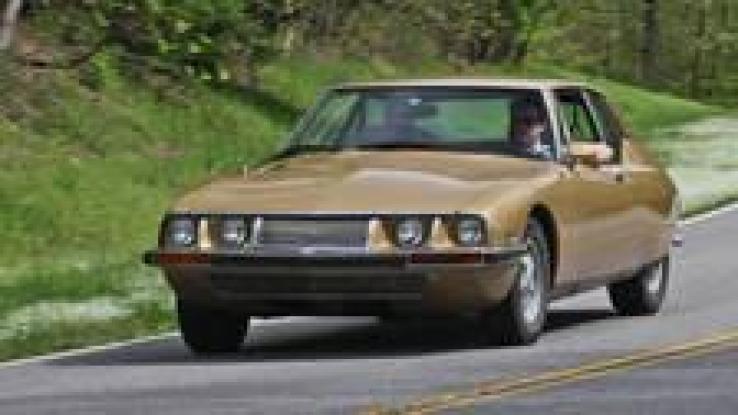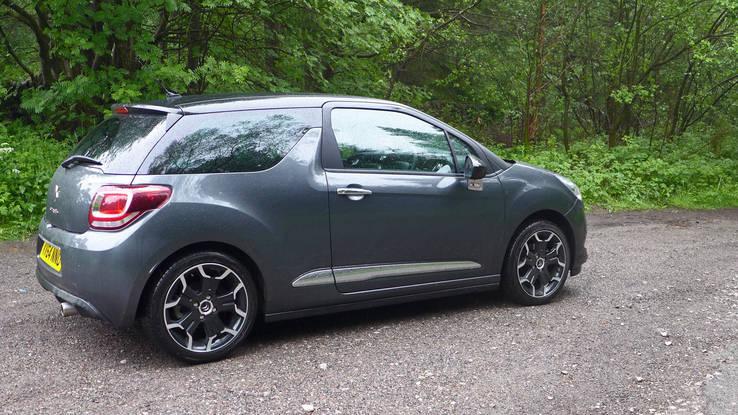We always want what we can’t have, but is what we can’t have even worth it?
We just celebrated the Fourth of July, so what the heck are we doing shoving a French car — this Citroen DS3 — down your throats?
Well, the French were total bros during the Revolution, for one. And where do you think the Statue of Liberty came from? Plus, America is all about freedom, which should mean the freedom to buy and drive any car you want, regardless of its country of origin.
It’s obviously not that simple. Even if your home state doesn’t give a rip about emissions testing, you have to clear all of NHTSA’s hurdles — and there are many — if you want to bring a foreign-market car into the country before its 25th birthday. You could pull a John Hancock and just smuggle one in, but the Feds have taken to tracking down and destroying contraband vehicles with uncharacteristic gusto.
Of course, none of this would matter if the cars offered elsewhere were all complete crap.
To find out, we rented a nice little 2014 Citroen DS3 two-door when we had some downtime in Manchester, England, recently. The DS3 is a car from a celebrated manufacturer that doesn’t have a presence in the States anymore (the occasional C4 Cactus notwithstanding). Far from a quirky oddball, it’s actually a fairly popular premium subcompact in markets where it’s offered.

The B-pillar is probably the wildest part of the DS3’s design, but we think the overall package works well.

Maybe it’s because we’re not exposed to them every day, but we think the DS3 looks great inside and out. Though it’s a small car, Citroen has made good use of its limited sheetmetal; note the interesting B-pillar treatment. It’s not so quirkily French as to be polarizing — both a benefit and a drawback, in our book — but it does have some attitude, especially when equipped with the diamond-cut gray alloy 17-inch wheels.
In short, the DS3 comes across as consciously designed in a way that no U.S.-market cars in this class really do; even the DS3 badge is a little work of modern art. Compare it to the Toyota Yaris, the Nissan Versa, the Mitsubishi Mirage. It’s not even close.
The roomy interior is similarly well considered. There are no gimmicks in the cockpit, but everything was solidly assembled and easily accessible. The gear selector knob and the hefty parking brake lever are pleasantly overbuilt, and we appreciated the use of metal trim on the steering wheel and other selected touchpoints — it gives everything a premium feel, despite the lack of leather seats.

Now this is the kind of wacky Frenchness we know and love.
As with the aesthetics, the drive experience was thoroughly pleasant but not mind-blowing. We tried everything from city driving featuring roundabout after roundabout to busy A-roads to hilly, quiet, fast backcountry two-lanes. We practiced working the gearshift with our left hand and hopefully didn’t tick off too many drivers in the process.
Shockingly (or maybe not), nobody at the rental stand knew what engine the car had, and there was absolutely no documentation in the car to tip us off. Best we can figure, it came equipped with the 118-hp, 118-lb-ft 1.6-liter naturally aspirated gasoline inline-four. Not the base engine, but not the hot 204-hp 1.6-liter turbo, either.
In any case, fears of underpowered Euro-spec drivetrains were unfounded: Connected to a five-speed manual, there was more-than-adequate output, smoothly delivered. The naturally aspirated engine was a nice change of pace, since we’d just assumed that everything with four wheels in Europe sports a turbocharger these days. But again, it wasn’t so good that we’re thinking about applying for French citizenship or anything. Imagine a base Chevy Sonic but with a good shifter, and you’re probably close.

The DS3 is a nice little car, but its presence in the United States wouldn’t really change the playing field dramatically.

Does that mean the lust for Euro-market cars is just another instance of the grass being greener elsewhere? Maybe — except for the suspension setup and tuning. With the right blend of firmness and compliance (and none of the sloppy roll that seems to plague small, inexpensive cars sold in the States), the DS3’s ride quality is probably the one thing a non-Francophile will be pining over. So as cool as Citroen’s triumphant return to the U.S. would be, it’s the chassis and suspension feel that we’d most like to see make it across the Atlantic.
It’s been said that Europeans prefer firmer rides than typical American buyers, and perhaps that’s true. But there’s a middle ground between bone-jarring stiffness and a car that feels like a blown-out old lounge chair, and cars like the DS3 seem to have found it. Emulating that ride quality would go a long way toward making cheap cars sold in America feel substantially more premium, even if it’s a sort of in-the-background thing that non-enthusiasts might not notice. Plus, it would make inexpensive econoboxes even more fun to drive than they already are.
With automakers from Ford to Honda to VW pushing for globalized vehicle design and production, this change may be on the horizon. In the meantime, the NHTSA should relax its absurdly restrictive 25-year import rule. We saw plenty of previous-gen Mustangs, new Camaros and other gray-market muscle in Europe. It would be nice if enthusiasts in the Land of the Free could buy, import and drive what they like as well.



























